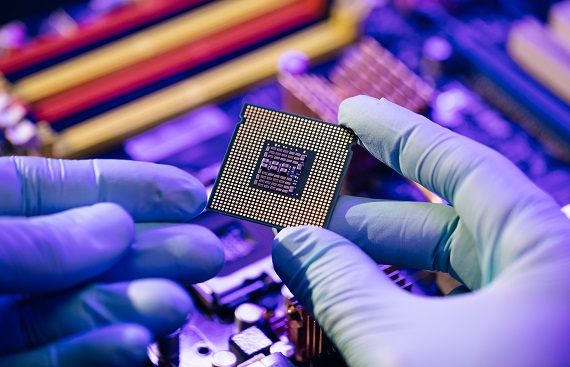India's Semiconductor Sector Poised for $40Billion Growth by 2030: IESA

India's semiconductor industry could reach $40 billion by 2030, driven by efforts to strengthen the entire supply chain ecosystem, including key components like chemicals and gases used in chip manufacturing. A senior official from the India Electronics and Semiconductor Association (IESA) highlighted that fostering a robust infrastructure for these critical materials will be crucial to the industry's growth. With increased focus on domestic production and innovation in the semiconductor sector, India is positioning itself as a major player in the global electronics market.
At the IESA Vision Summit, Ashok Chandak, President of the India Electronics and Semiconductor Association (IESA), emphasized the need for India to learn from established global semiconductor hubs, acknowledging the complexity of the technology. He pointed out that gaining insights from these leading centers will be crucial for India to advance its own semiconductor capabilities and compete on the global stage.
"Any chip-making touches at least more than 10 countries. It is very complicated. If we have to make semiconductor manufacturing successful in India, we have to take care of the supply chain that includes gases, chemicals and materials, and most of the supply chain has to happen with the plants that are going to manufacture semiconductors", says Chandak.
Chandak also mentioned that in 2022, IESA released a report outlining the necessary groundwork for India’s semiconductor ecosystem. Building on that, a new report has now been launched, which focuses on the various manufacturing opportunities and potential cases for India in the semiconductor industry.
"Overall, we estimate that the supply-chain-related market worldwide is going to increase to $420 billion by 2030 and if we aspire for about 10% share that means we are looking at a possible opportunity of $40 billion. This could happen through some of the global companies moving their base to India to make for India and also for exporting", Chandak stated.
According to the IESA report, India's semiconductor industry is projected to reach $10 billion by 2030 with the current framework in place. The report also highlights a significant workforce demand, estimating that by 2026-2027, India will need around 1.5 million skilled workers and 5 million semiskilled workers across the semiconductor value chain. Key roles in high demand include processing engineers, equipment engineers, IC testing engineers, and capacity planning managers. In the next two to five years, job opportunities are expected to expand in design, manufacturing, training, supply chain management, chemical and materials engineering, packaging, testing, and logistics. Chandak also noted that global interest in India’s semiconductor sector is growing, as demonstrated by the 19th IESA Vision Summit, where over 30 memorandums of understanding (MOUs) were signed, including those between Tata Electronics, PSMC, and Himax.
"Semiconductor is a very niche industry but also a pillar for the digital revolution. We had over 2,400 registrations for the event. During the inaugural session, over 1,750 people were present. We have seen more than 250 international leaders, in addition to the Indian counterparts joining this, which reflects upon the interest of global firms in India", he added.
